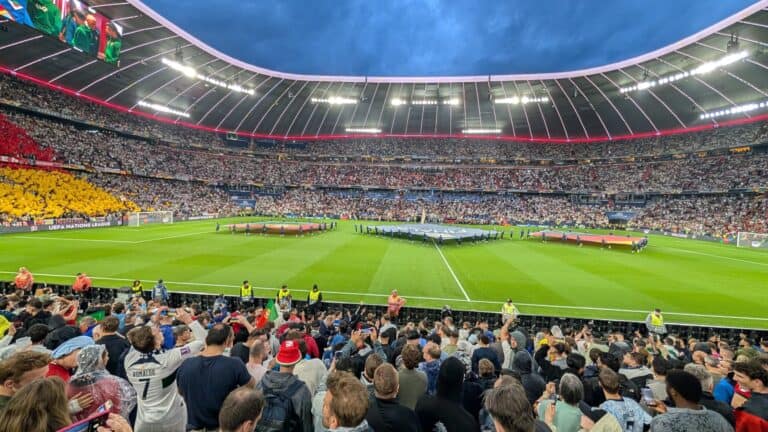When the referee blows his whistle to start the Germany vs. Portugal match at the Allianz Arena in Munich, it marks the beginning of the game for millions of viewers at home and 70,000 people in the stadium. That sounds simple, but behind this soccer match is a technological operation that has been months in the making. We got a glimpse behind the scenes.
Atos has been the official IT partner of UEFA since 2022. The task assigned by UEFA is both simple and complicated: everything surrounding the soccer matches must run smoothly. Whether it’s providing and securing digital tickets, accrediting staff and VIPs, delivering live statistics to partners, the app for fan engagement during a European Championship, or the network cables along the sidelines for all attending sports photographers. Everything must work flawlessly.
Some soccer fans are aware that UEFA visually customizes stadiums. All advertising billboards are changed to UEFA sponsors, other sponsor advertisements must be removed or covered up, the stadium’s beer is replaced with that of the UEFA sponsor, and so on. Technologically, however, the impact is even greater.
A month of preparation
Many modern soccer stadiums already have the necessary IT infrastructure. However, this is rarely sufficient for an UEFA match. The Allianz Arena, where Bayern Munich normally plays its matches, is certainly not bad, but it is insufficient for UEFA. In total, UEFA needed a month of preparation to get everything right.
For example, Atos installed a fully redundant network in the stadium for all kinds of critical operations. These include match organization, VIP and hospitality, media activities, broadcasters, commercial services, and security.
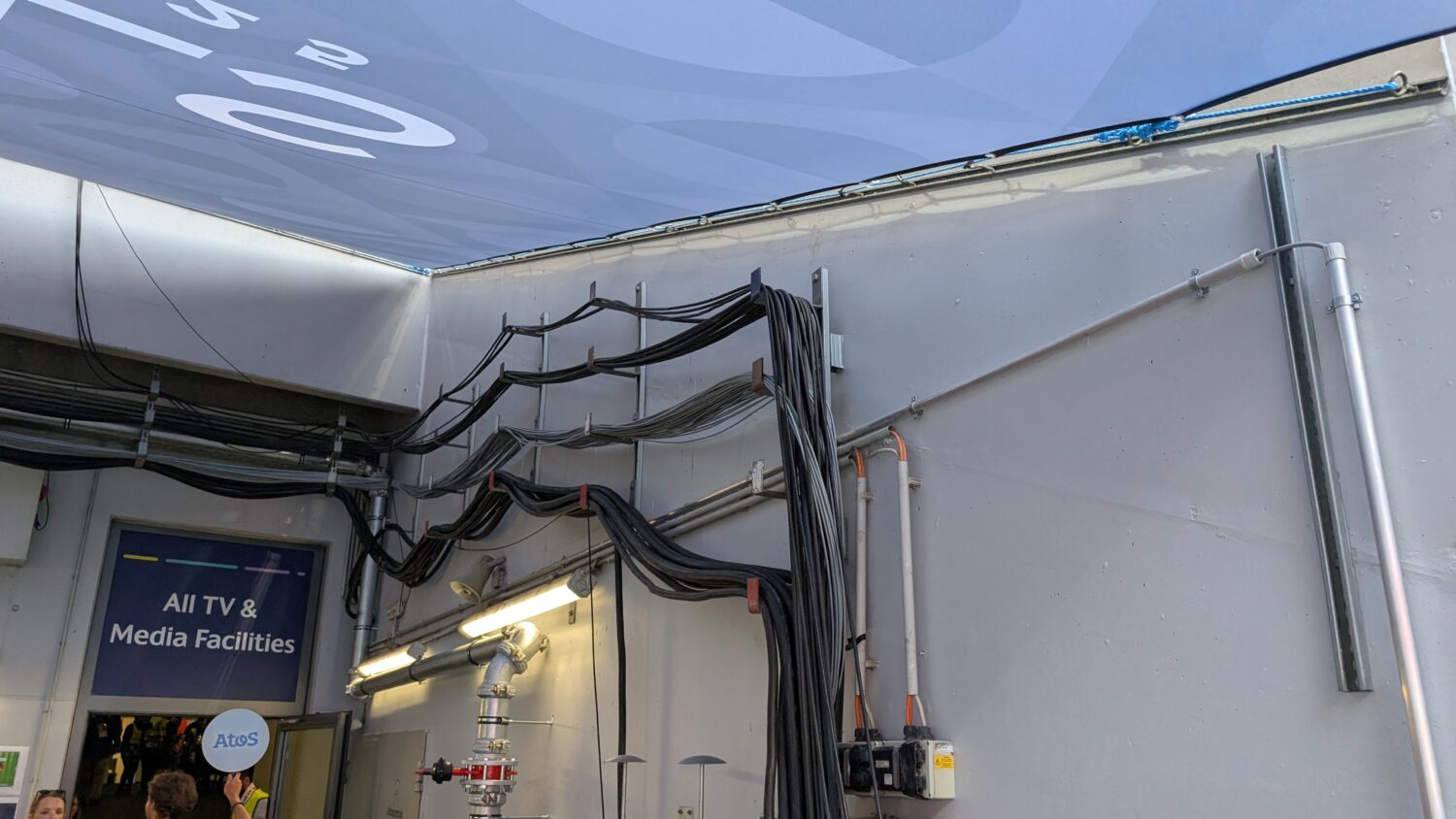
This is more than just rolling out a few cables; there are dozens of kilometers of cables. Everything is done to ensure that the technology does not fail during a match. The Allianz Arena is now familiar territory for UEFA and Atos, as high-level matches are regularly played here. However, many outdated stadiums in Europe require significant modernization, which takes considerable time.
It is a huge logistical operation that requires a great deal of expertise to ensure that everything runs smoothly. Although it takes a month from the first visit to the final check, UEFA cannot claim the stadium for a month. Ultimately, everything is rolled out in a few days and then removed again.
Standardization and preconfigured systems
Atos has implemented a high degree of standardization in the rollout of stadium infrastructure. For example, standard boxes with equipment have been developed that can be installed in any stadium. Everything is connected to these boxes and works immediately. The configuration of these boxes is always identical and takes all kinds of scenarios into account.
When you roll out kilometers of cables and infrastructure in three days, you don’t have time to make configuration changes on site. Everything has to work immediately.
However, it doesn’t stop with supplying the infrastructure. Access to a stadium and security are also digitally controlled by Atos.
The end of paper tickets
The paper ticket with QR code is a thing of the past at UEFA. Atos has developed an app for UEFA that every spectator must download and install, because it contains the extra-secure access ticket. This also means that people without a smartphone can no longer attend a UEFA match. The smartphone is now a requirement.
Although you sometimes know weeks or months in advance that you are going to attend a UEFA match, you cannot view the ticket in the app. This is only possible on the day of the match and when you are physically near the stadium. The app, therefore, requires access to your smartphone’s GPS. Once you arrive at the stadium, a secure QR code with moving elements appears, which is replaced every minute. This ensures that QR codes cannot be copied.
Accreditation for employees and VIPs
In addition to the spectators in a stadium, there are also thousands of people working in and around the stadium. They also need to be granted access, which is done through an accreditation process. Atos has developed a portal for UEFA where employees, media, teams, partners, and VIPs can register. It is then up to UEFA to assess these applications. Once approved, these individuals can pick up a badge with the appropriate accreditations.
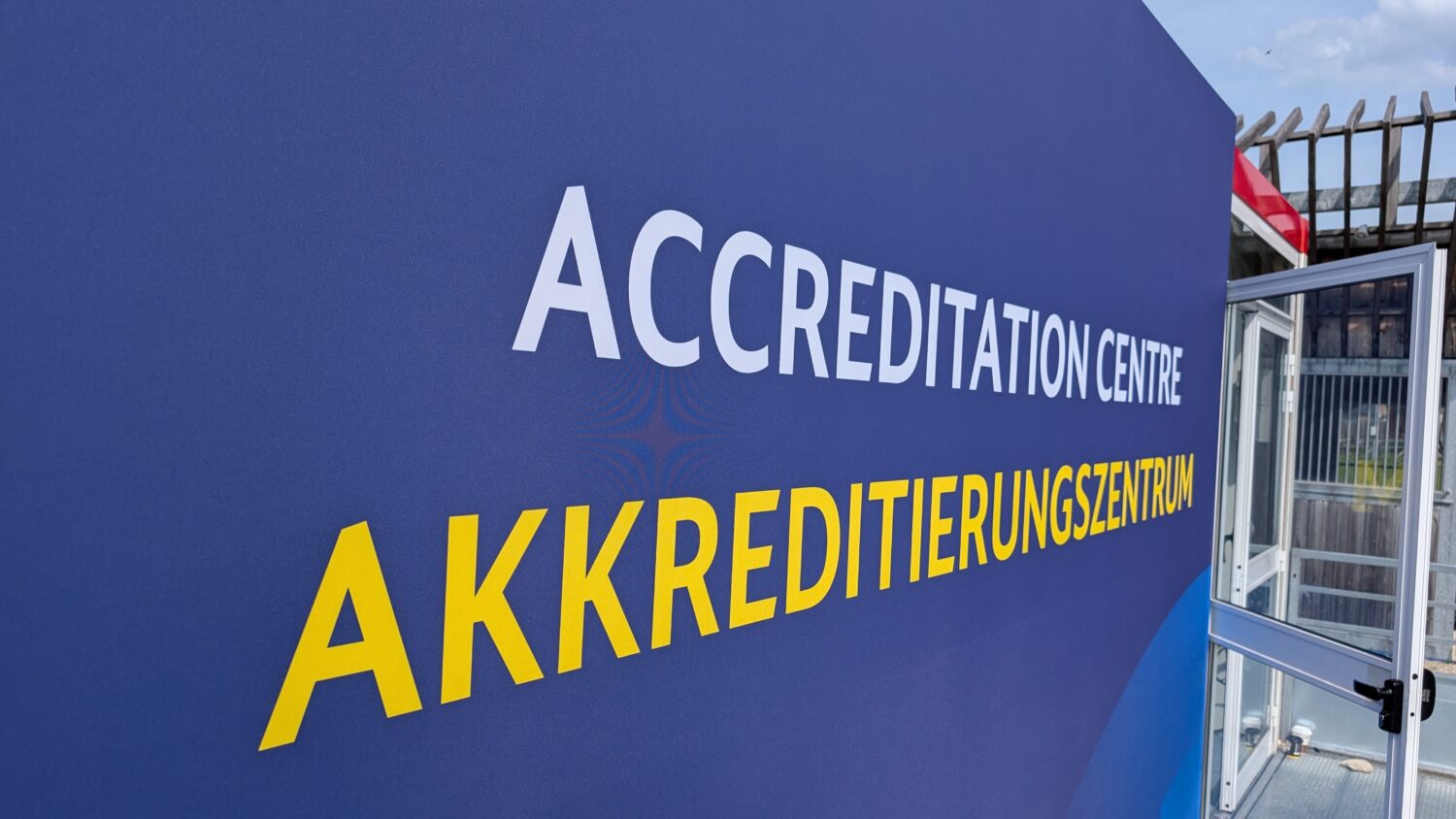
A badge is required to gain access to a stadium, and this can be collected from an accreditation center. This is a building located within a few kilometers of the stadium. Here, identity documents are checked, and the special accreditation passes are printed and fitted with a security chip. VIPs do not need to visit an accreditation center; UEFA has set up a special accreditation desk in the VIP hotels for this purpose.
All persons with accreditation have access to certain parts of the stadium, which is visible on the badge, but also on the chip. At the entrance doors, the chip is also read by a hand scanner, allowing UEFA to revoke accreditation at any time. During the 2024 European Championship, Atos processed 130,000 accreditation requests.
Atos helps UEFA innovate for the future
With the accreditation system and extra-secure access tickets, Atos has already taken the security of many soccer matches to a higher level. In addition to the technology surrounding the match, Atos does a lot more. The way in which sport is consumed is constantly changing. That means UEFA has to innovate. Atos has a lot of experience in this area: before becoming a partner of UEFA, it provided IT services for the Olympic Games for 20 years. A lot has changed in 20 years – think of the rise of the smartphone, the transition from HD to Full HD to 4K. These are all technical challenges that require a different way of delivering content.
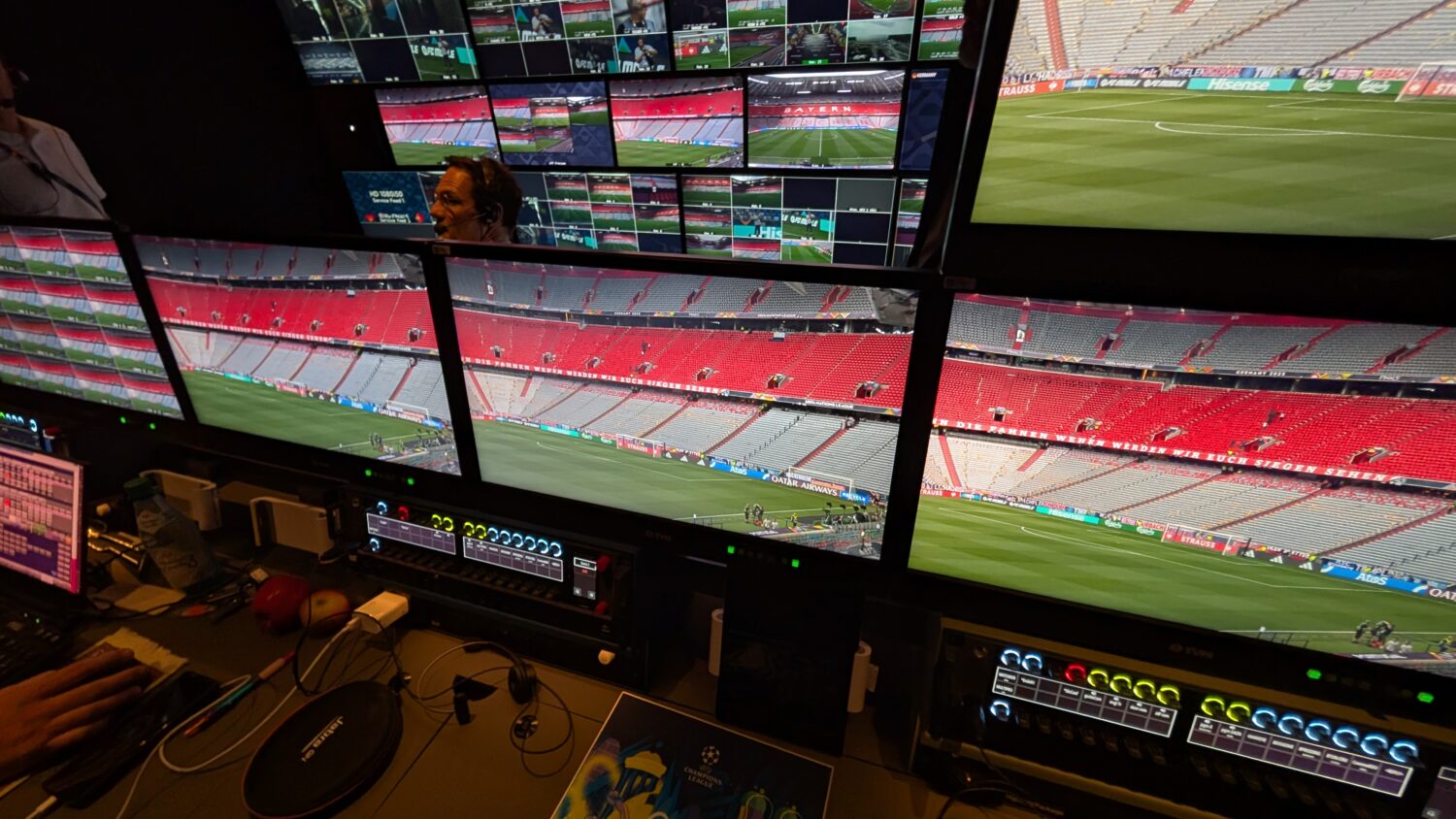
The way people watch sports is still changing. Research by Atos shows that 77 percent of people over the age of 56 still watch sports on television. In the 40 to 56 age group, that figure is only 57 percent. Among millennials and Gen Z, it is only 35 percent. The younger target group is therefore losing interest in consuming sports via television. On the other hand, they do consume a lot of sports on their smartphones: no less than 65 percent watch sports on their phones.
Nowadays, it is easy to offer a video feed from an app on a smartphone. However, it offers many more possibilities: UEFA can also provide more personalized experiences via an app, utilize advanced technology, leverage real-time data, and foster engagement. A standard video stream offers limited possibilities, but when it is offered via an app, the possibilities are enormous. The stream then comes via an intelligent platform.
You can see at an individual level where a viewer is from, which videos he or she is watching, and which club, country, or player the viewer is a fan of. Based on that, you can offer more content that falls within the viewer’s interests. That could be articles about a training session, footage of a press conference, or the highlights of a player or team.
The app and fan experience are becoming increasingly important
During UEFA EURO 2024, Atos and UEFA invested heavily in the app experience. The goal was to increase fan involvement in the tournament and also to provide a better mobile experience. Ultimately, the app was downloaded 6 million times, and 1.3 billion push notifications were sent during the tournament. This made it clear that fans really wanted to know everything immediately. Atos announced that the underlying infrastructure was capable of delivering a push notification of a goal faster than it was visible on television. They may need to delay this by a few seconds in the future, but it shows how important Atos and UEFA consider the mobile experience to be.
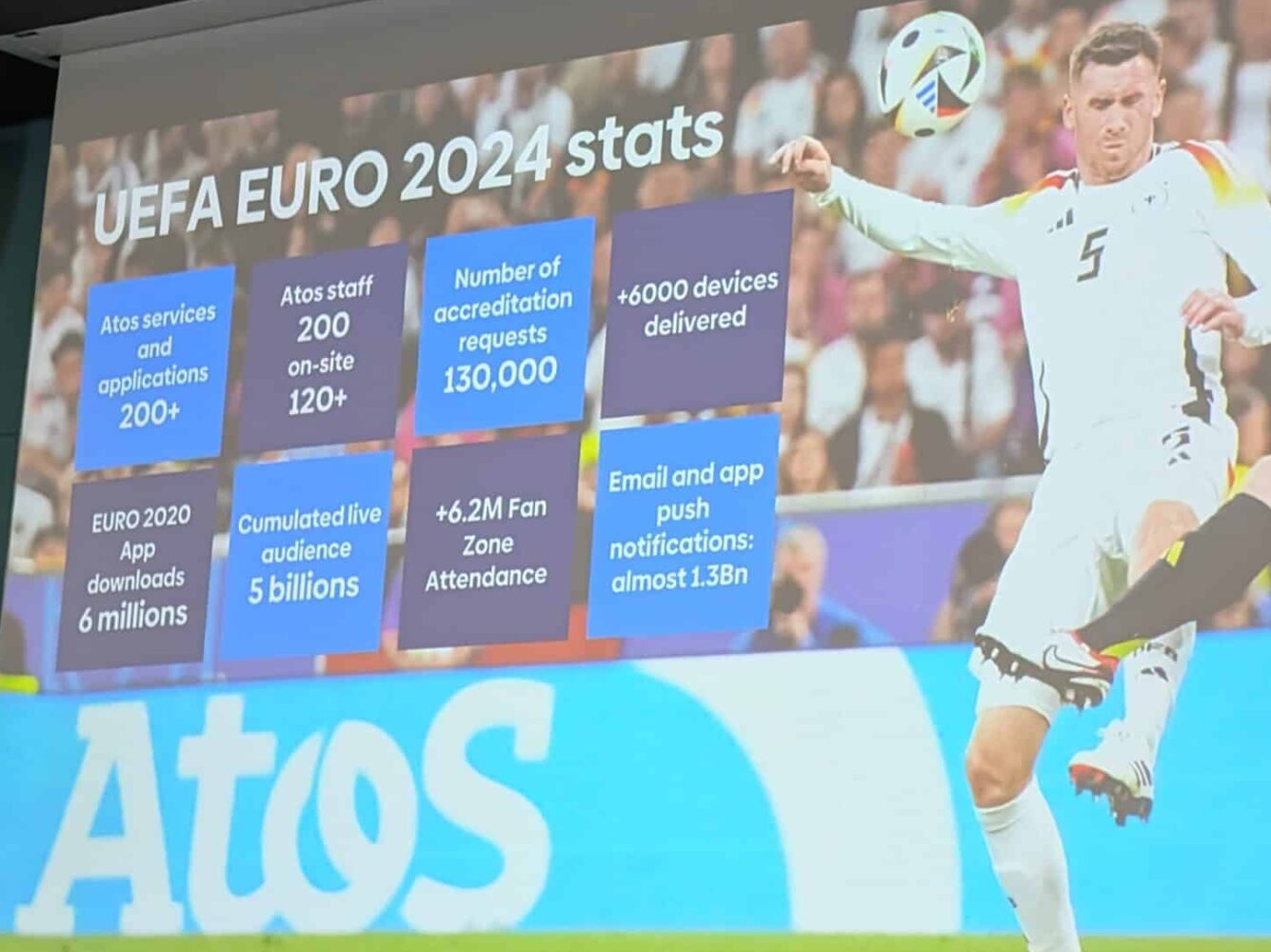
Data plays a huge role. Fan data is easy to collect via the app. However, there is also a lot of data available from live matches, past matches, player statistics, and the like. Video footage of matches has been analyzed by people and converted into data for years. Nowadays, this can also be accomplished with the help of AI. AI can also perform more in-depth analyses, which UEFA can use to enhance the experience and the information it provides. This presents enormous opportunities for the future.
High-level physical and digital security
We have already discussed the security of the tickets and the accreditation of individuals. Atos has developed even more tools to help UEFA organize matches and tournaments securely. For example, an AI-based dashboard has been developed that can assess how risky certain matches are. Based on the two teams playing against each other and the location, an assessment can be made of the match’s risk level. The fans of some clubs or even countries do not get along very well. Additionally, it is possible to utilize and analyze historical data, previous incidents based on media and police reports, as well as the broader political context. This greatly helps UEFA, as well as municipalities and police, in organizing matches safely.
Cybersecurity: digital security
Since so many processes surrounding a match have been digitized, the underlying infrastructure must be secure and reliable. This means that Atos must ensure that cybersecurity is of the highest level. If tens of thousands of people want to enter a stadium before a match, the tickets must be loaded.
The network in a stadium is connected to the internet and has to handle all kinds of critical services. It simply cannot crash. It, therefore, must be secured with very high standards. Potential vulnerabilities must be detected and resolved promptly. These can also be found in edge devices, such as an outdated printer or a point-of-sale device in a stadium’s catering facility. This requires a high level of knowledge in a dynamic environment where it is not always possible to properly map all endpoints.
During UEFA EURO 2024, Atos managed to reduce 3 billion security events to around 800 alerts, but ultimately, no cybersecurity incidents occurred. It undoubtedly wants to maintain that score.
The invisible revolution
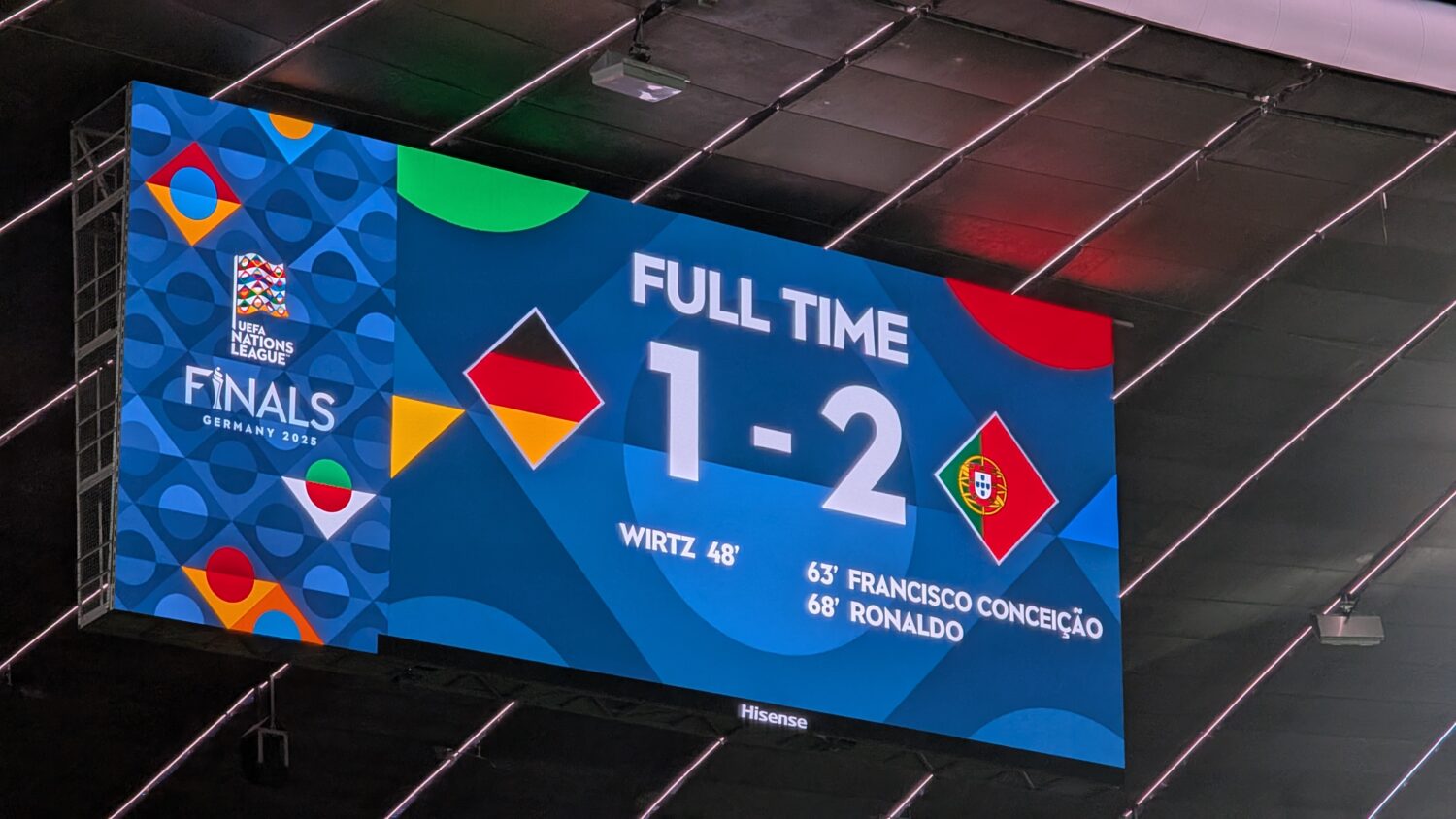
For the average soccer viewer, the game has changed little in recent years. This soccer match between Germany and Portugal was entertaining to watch, but no different than usual. Portugal is still an expert in stalling a game. Yet we now know that behind every goal, every statistic on your smartphone, or every broadcast, there is a tremendous amount of technology and infrastructure.
In that respect, the achievements behind the scenes are more impressive than some soccer matches during a European Championship. If AI is used to make the proper risk assessment, the app is faster than the TV signal, and everything runs reliably and securely without interruption, then that can be a bigger achievement than the game on the pitch.
Read also: Atos is on track with its Genesis plan: is the company recovering?
